|
|
A wide-angle photo tour of Venice
These captioned photos offer a fresh perspective on Venice, Italy. They were taken with an Olympus Evolt E-510 DSLR camera, using an Olympus Zuiko 8mm f/3.5 fisheye lens. Piazzetta (San Marco)
This view of the Piazzetta dei Leoncini (a.k.a. the Piazzetta San Marco), a side branch of the Piazza San Marco that leads to the waterfront, shows the Campanile or bell tower (left), the Clock Tower and Basilica (center), and the Doge's Palace. The Piazzetta also has plenty of pigeons, although their numbers have declined since pigeon-feeding was outlawed and grain vendors were banished from St. Mark's Square a few years ago.
At the opposite end of the Piazzetta, two columns face the square and the waterfront. (Originally there were three, but one fell into the lagoon during the columns' installation during the 12th Century.) The granite columns--one named "Marco," the other "Todaro"--were imported from Egypt at a time when Venetians were bringing back saints' relics, antiquities, and other loot from trading trips and military successes abroad. The sculptures on top are later additions. In the heyday of the Venetian Republic, the space between the columns--also used for executions--was the only area in Venice where gambling was legally permitted. Today, the Casinò di Venezia is the nearest gaming venue, although you might get lucky and find a Three-Card Monte dealer hiding among the pigeons. Grand Canal and bridges
From the Ponte dei Scalzi, near the foot of the the Grand Canal, we can see the Ferrovia or Venezia Santa Lucia Railway Station and its ACTV vaporetto platforms and the Scalzi Church. The Baroque church was constructed in the late 1600s; the Santa Lucia railway station (the low modern building to the left of the church) opened in 1955. The stone bridge, which has crossed the Grand Canal since 1934, replaced a 19th Century iron bridge by the British engineer A.E. Neville. It's one of four bridges that span the serpentine canal, which follows the course of an ancient river.
Looking in the other direction from the Ponte dei Scalzi, we can see two types of ACTV water bus: a flat-decked vaporetto with a large open boarding area (left) and a more enclosed and seaworthy motoscafo (right). Vaporetti are used mainly on relatively sheltered, high-traffic routes in the Grand Canal, St. Mark's Basin, and the Giudecca Canal, while motoscafi are faster and better able to resist waves in more exposed areas of the Venetian Lagoon.
Farther up the Grand Canal, we can see lighter-than-normal traffic in this view from the Rialto Bridge. The only boats in motion are two gondolas, a No. 1 vaporetto, and a water taxi.
Rialto has been the commercial center of Venice for more than 1,000 years. Where sailing ships once delivered spices and other precious cargos from the East, barge drivers now unload cardboard cartons of fake Murano glass and other souvenirs from China (not to mention clothing, telefonini, and iPads).
The current Ponte di Rialto, or Rialto Bridge, replaced a drawbridge across the Grand Canal in the 16th Century. Until the 19th Century, it was the only bridge that connected the two banks of the Grand Canal.
Stone arcades with shops occupy the center of the Ponte di Rialto, providing structural reinforcement for the 500-year-old bridge and souvenirs for tourists. The bridge's foundations are anchored by the palazzi on both banks.
If you aren't near one of the major bridges across the Grand Canal, you can use the gondola ferries or traghetti at half a dozen points along the canal. A traghetto ride will cost you €2,--, which you hand to an oarsman as you board or disembark. It's the cheapest (and quickest) gondola ride in Venice.
Locals usually stand when riding a traghetto, but there's no shame in sitting if you aren't used to bobbing boats. In fact, an oarsman may gesture for you to sit down if he's worried about your stability or his liability insurance. And yes, a traghetto ride can be bouncy. The Grand Canal is a busy place, with water buses, barges, police boats, ambulances, gondolas, water taxis, and plenty of other traffic, especially in the daylight hours when traghetti offer service across the canal. If a fireboat roars past while you're teetering on high heels in the middle of a flat-bottomed gondola, you're likely to feel the wake.
The Ponte dell'Accademia, or Accademia Bridge, was erected as a wooden temporary bridge in the early 1930s. It replaced an iron bridge that British architect A.E. Neville built in 1854. (Neville also designed the original Ponte dei Scalzi near the railroad station.) The Accademia Bridge is located near the San Marco end of the Grand Canal. It
crosses from the Campo San Vidal (a small square off the Campo San Stefano) to
the Campo della Carita and the Accademia art museum (hidden by scaffolding and a
construction screen in the photo above, which was taken during the gallery's
restoration).
A vaporetto station is on the southern or left bank of the Grand Canal, just to the left of the Accademia Bridge in this photo. You can buy waterbus tickets at the Actv booth. Validate your ticket in the yellow stamping machine before boarding the vaporetto. You'll also find public toilets just beneath the bridge.
Inset photo: The operator of a newsstand by the Accademia deserves credit for helping to keep his city clean: After a dog regurgitated on the pavement, the news vendor produced a broom, dipped it in the Grand Canal, and swept away the dog vomit. Campi and canals
The Campo and Church of Sant'Alvise are in the far northwestern corner of Cannaregio, in an area where few tourists venture. The neighborhood is pleasant, the views are pretty, and you can visit the church free if you have the Chorus Pass.
The Campo della Madonna dell'Orto and the Madonna dell'Orto Church are within a few minutes' walk of Sant'Alvise (see previous photo). Admission to the church is free with the Chorus Pass. The Venetian Gothic church is famous for its paintings by Tintoretto, who lived and worked in the Campo dei Mori nearby. If you're lucky, you may be able to attend a free or inexpensive concert here: We once discovered that the Madonna dell'Orto Church had been hired for a performance by a visiting college choir from Illinois in the USA.
The Campo Santi Giovanni e Paolo, on the border of Canneregio and Castello, is home to two major institutions: The Santi Giovanni e Paolo Church (the brick building on the right side of the photo) and, just beyond it, the modern Ospedale Civile or Public Hospital. (The hospital runs all the way from the square to the Fondamenta Nove and is mostly hidden from view behind the Scuola Grande di San Marco with its over-the-top 15th Century façade.) The Giovanni e Paolo church, called "San Zanipolo" in Venetian dialect, is well worth visiting: It's one of Venice's largest and most beautiful churches, and 25 doges are entombed within its walls, floors, and monuments. The square is also home to a well-known café and pastry shop, but be forewarned: Tour groups frequent the café, and the gelato portions are among the stingiest in Venice.
Only a minority of tourists find their way to this neighborhood square in the sestiere of Santa Croce. That's too bad, because the campo is a pleasant spot for relaxing on a bench, grabbing something to eat at one of the shops or cafés, and--above all--visiting the Chiesa di San Giacomo dell'Orio. The chiesa is one of Venice's oldest churches, dating back to the 9th or 10th Century AD. (The campanile, or belltower, is an add-on from the 13th Century.) The wooden ceiling of the church, which resembles an inverted ship's hull, is reason enough to pay a visit. Admission is free with the Chorus Pass.
The Campo Santa Maria Formosa is one of the city's largest squares, but it has a friendly and unassuming neighborhood feel. It's the kind of place where you can buy flowers, duck children's soccer balls, stop in the church for a spiritual pick-me-up, or grab a cup of coffee in a bar frequented by locals. The streets leading off the square are filled with little shops and restaurants, some geared to residents and others catering to tourists. Work on the chiesa began in 1492 (the same year that Columbus reached America), using the foundations of an earlier church. The belltower was added in the 1600s; look for the ugly stone face on one side of its foundations. Admission to the church is free with the Chorus Pass.
Venice is a city of canals, and you never know what you'll encounter as you walk along its water-filled streets. Here, on the Rio dei Carmini, we saw a group of boaters exploring the city by kayak. Murano
Murano, the glassmaking island, is easy to reach from the historic center by public waterbus. (Some glass showrooms offer free tickets on their own boats, but do you really want to join a tout's captive audience?) Like Venice, Murano has canals, ancient buildings, and historic churches such as the Basilica dei Santa Maria e Donato (shown at left in the photo). See our comprehensive guide to Murano, the Glass Island, which has photos, tourist information, shopping advice, and links to other resources about Murano and Murano Glass.
The Basilica dei Santi Maria e Donato was founded in the 7th or the 10th Century, depending on which historians you believe. The current church was finished in 1141, and its Byzantine interior is reminiscent of the Basilica di San Marco in Venice with its dome of gold glass mosaic and its elaborately inlaid floor. This is one of the most interesting churches in the Venetian lagoon (along with the Cathedral of Santa Maria Assunta in Torcello, another must-see island on any Venetian Lagoon itinerary).
Murano, like Venice, is a cat-friendly environment. There are no automobiles to run over careless kitties, the natives put out food for strays, and rodents add protein and prey value to feline diets. Still, Venetians and Murano residents will tell you that cats aren't as plentiful as they were a generation ago, before the cat sanctuaries run by an organization called DINGO took hundreds (or maybe even thousands) of feral cats off the streets. Dogs are the current fashion, which is good for dog fanciers but unnerving to locals who fear a Willardesque invasion by rats and mice. San Michele Cemetery
The cemetery island of San Michele has been Venice's home for the dead since the early 19th Century, when--after the collapse of the Venetian Republic--Napoleon's administrators decided that it was unhealthy to bury corpses within the city proper.
Venice water buses stop at San Michele Cemetery year-round. From October 31 to November 2, when Venetians celebrate All Saints' Day by visiting graves, the transit service runs free vaporetti between the Fondamente Nove and Cimetero boat stops at 10-minute intervals.
San Michele's flat landscape is mostly occupied by graves and mausoleums. It also has a monastery church that predates the cemetery, and a new chapel is included in an expansion project designed by a British architect, David Chipperfield.
In the Catholic sections of San Michele Cemetery, most graves are dug up after 12 years and the skeletons or shrunken remains of the dead are transferred to metal ossuary boxes. The boxes are then stored permanently in mausoleums. (The cemetery provides watering cans and rolling stairs for the convenience of relatives who want to leave flowers or wash the tombs.) Warning: If you're buried here and your relatives haven't arranged for perpetual care, your bones will be transferred to a communal ossuary or boneyard after you've done your 12 years of time underground.
San Michele's Evangelical or Protestant Cemetery is separated by walls from the Catholic sections (as is an Orthodox cemetery where Greek and Russian Orthodox dead are buried). It feels a bit like an old English churchyard with its worn headstones, broken tombs, and neglected graves. Celebrities in this section of the cemetery include Ezra Pound and Joseph Brodsky. Note: Jewish burials normally take place on the Lido, the narrow strip of land that separates the Venetian Lagoon from the Adriatic Sea. Jews have been buried on the Lido since 1386, as you'll learn from a New York Times article about the old Jewish cemetery. See our Venetian Ghetto article for more information on Venice's Jewish history, the Museo Ebraico, and a kosher restaurant. Shops
Roberto Caruti is the manager and one of three partners in I Tre Mercanti, a top-quality gourmet shop that offers carefully selected foods and wines from throughout Italy. (Signor Caruti is a native Venetian who spent 10 years with Gucci in Italy and Britain; his wife is English.) I Tre Mercanti, which opened in 2007, has an inventory that changes with the seasons--including such delights as 50-year-old balsamic vinegar in 60-ml bottles (filled from a production run of only 1.2 liters per year), specialty olive oils from Italy's best growers, and nearly 100 pasta sauces. Signor Caruti and his English-speaking staff will pack items for safe transport or ship them to you with customs duties prepaid. The store is in Castello, just a few blocks north of St. Mark's Basilica and the Piazza San Marco.
Ratti, just up the street from I Tre Mercanti, opened for business as an ironmonger in 1882. Today, it's a major appliance, housewares, and hardware store where you can find everything from nails to washing machines and flat-screen TVs. For the tourist, Ratti is a great place to buy hard-to-find Italian items such as replacement parts for Bialetti coffeepots. (Bring an old rubber ring from your Moka Express, and you'll find its counterpart at Ratti.) Ratti also has a large selection of rubber boots for the acqua alta or flood season: During our most recent visit, we found waterproof wellies in European sizes 35 to 46. (If the standard green isn't your color, you can buy fake leopard rain boots at a higher price.) Ratti's address is Castello 5824; the store is at the corner of Salizzada San Lio, Calle al Ponte della Guerra, and Calle delle Bande.
The ancient wooden sign above the door reads "Zago," but this long-established stationery shop is named Il Pavone ("The Peacock"). It's on the Campiello dei Meloni at San Polo 1478, not too far from the Rialto Bridge. Il Pavone makes and sells colorful "peacock" papers, journals, photo albums, wax seals, decorative rubber stamps, and related gift items. If you're looking for a stamp of your initial or a Venetian motif (such as the winged lion that my wife wanted to buy), just ask the friendly, English-speaking proprietor to show you his catalog. After you've picked your design, he'll make a rubber stamp on the spot and test it with an inkpad before taking your money. The owner's brother operates another Il Pavone store on the Fondamente Venier dei Leone in Dorsoduro, near the Peggy Guggenheim art museum. It has an even larger variety of products, including tote bags, boxes, neckties, etc. decorated with the Venetian motifs that are used for Il Pavone's rubber stamps.
The owner, a native of Austria who has lived in Venice for several decades, offers a wide selection of beautiful nightgowns (vintage and new), embroidered little girls' dresses, purses, sachets, linens, and other items at prices that range from four or five euros to €100 or more.
If you're looking for a romantic souvenir or gift from Venice, you're likely to find it at Annelie. It's the kind of shop that's hard to leave empty-handed. Other scenes
The No.1 and No. 2 vaporetti have large areas of open deck that are popular with tourists. (Some older boats also have seating in the bow, and all have a small semicircular area of sheltered open-air seats in the stern behind the passenger cabin.) In this photo, a No. 2 vaporetto is approaching the Zattere ACTV station on the Giudecca Canal. Note: Some Alilaguna airport boats collect and discharge passengers at a pontoon near the ACTV Zattere station. This a convenient location for reaching addresses in Dorsoduro.
Just beyond the San Basilio vaporetto stop is the San Basilio cruise terminal, which faces the Giudecca Canal and is accessible via a wooden footbridge. San Basilio (with its neighboring pier of Santa Marta) is the smaller of Venice's two main cruise terminals.
There's nothing special about the Calle Seco Marina in Castello, and that's one of the calle's charms: It's a quiet, unassuming street of apartments, paving stones, and clotheslines, yet it's within a two- or three-minute walk of the busy waterfront and Venice's largest park. The Via Giuseppe Garibaldi, with its many shops and restaurants, is only a block away. When you're in Venice, buy a good street map (or use the one on your phone) and go wandering. You'll find hundreds of little streets, squares, and canals where Venice's 56,000 residents go home to eat, relax, and talk to each other on their telefonini at the end of the day.
The Riva dei Sette Martiri is a stretch of waterfront between the Piazza San Marco and the Giardini Pubblici (the park next to the Biennale art exposition's grounds). Large yachts, sailing ships, and small river-cruise vessels such as CroisiEurope's Michelangelo, shown above, sometimes tie up here.
(Our son once gave a yelp when he opened the cabin curtains and saw a ship looming over our small river cruiser, Peter Deilmann's Casanova, which cruised the Po River from Venice a number of years ago.)
|
|
| Venice for Visitors - Home | | Europe for Visitors - Home | | About our site | | Press clippings | | Testimonials | Copyright © 1996-2025 Durant and Cheryl Imboden. All rights reserved. |
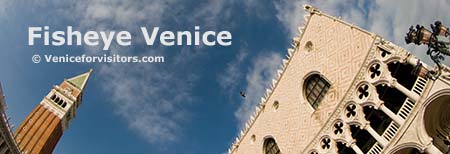
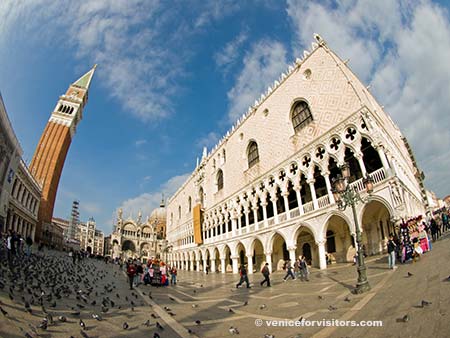
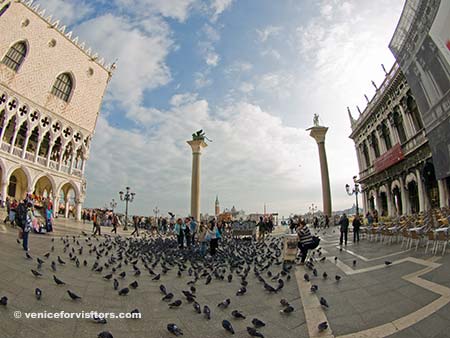
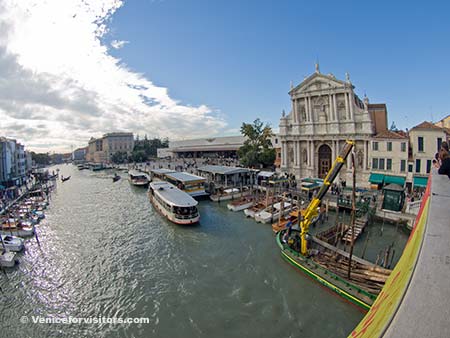
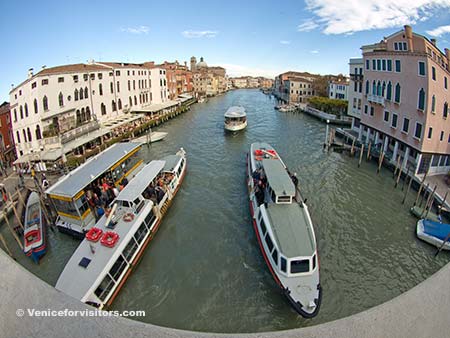
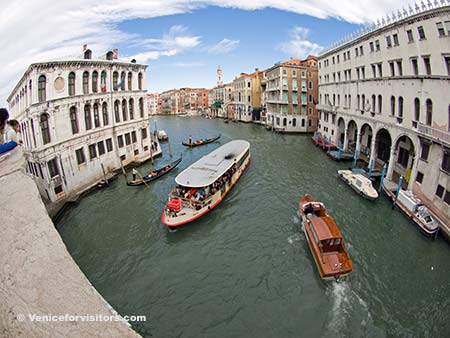
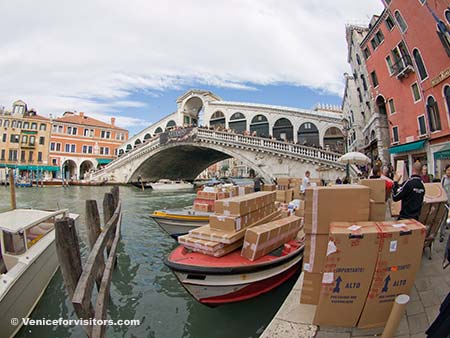
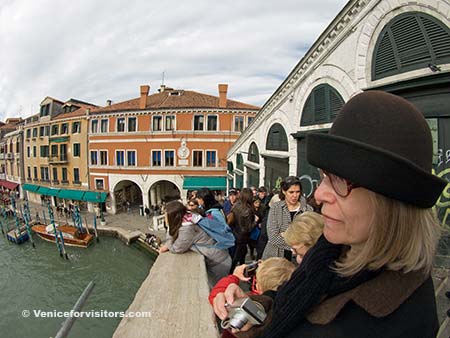
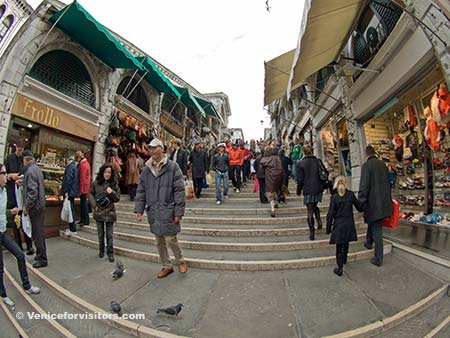
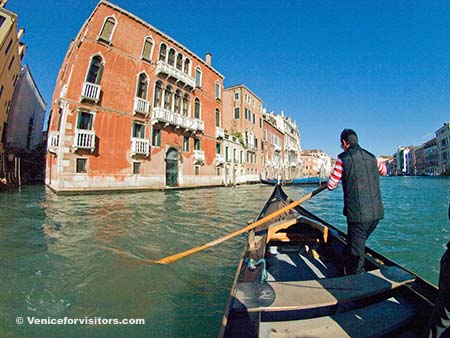
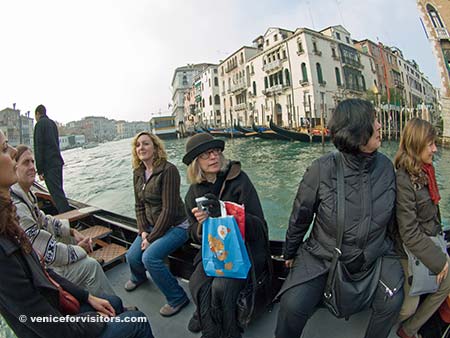
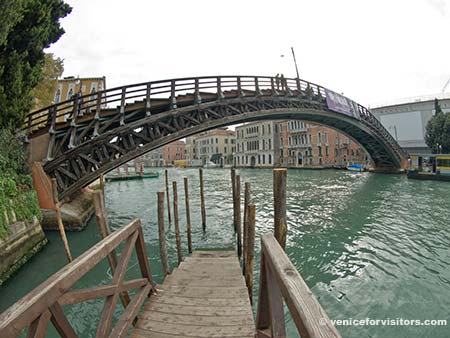
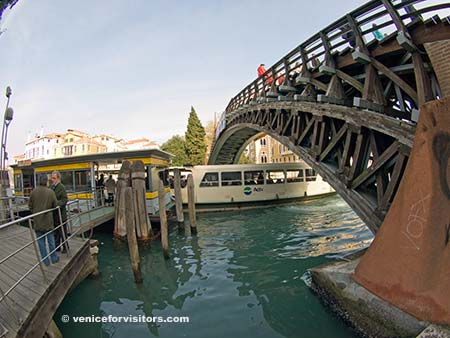
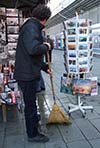 Pizzeria
Accademia, on the right side of the bridge's steps, has outdoor tables facing
the Grand Canal year-round. (I haven't eaten there, but the authors of
Pizzeria
Accademia, on the right side of the bridge's steps, has outdoor tables facing
the Grand Canal year-round. (I haven't eaten there, but the authors of
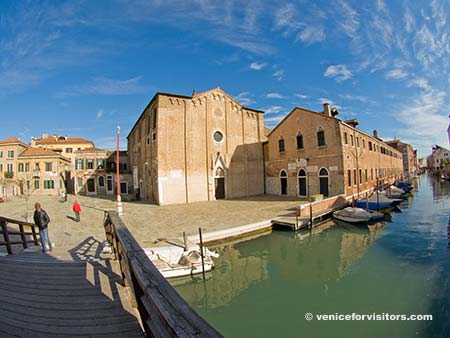
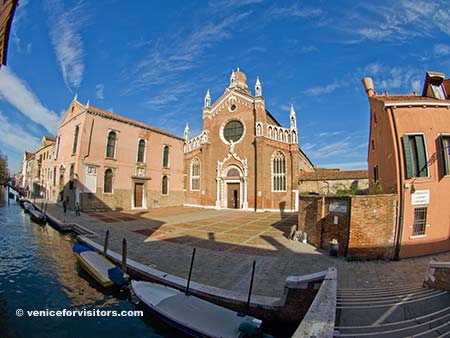
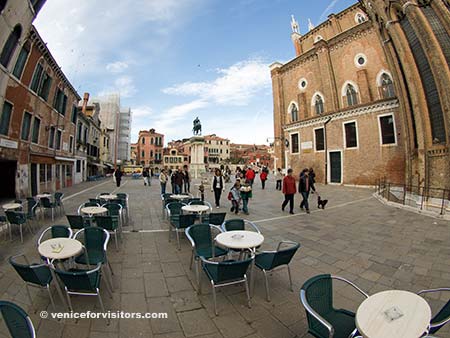
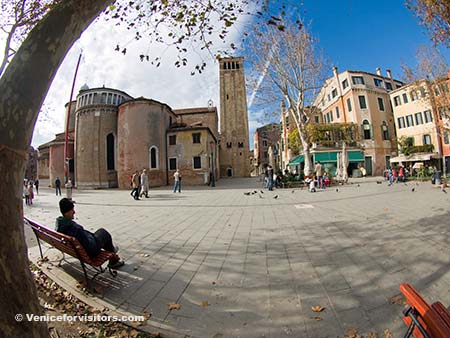
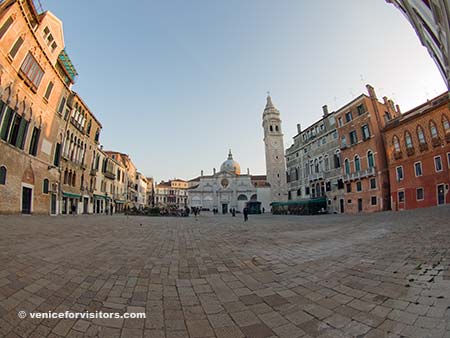
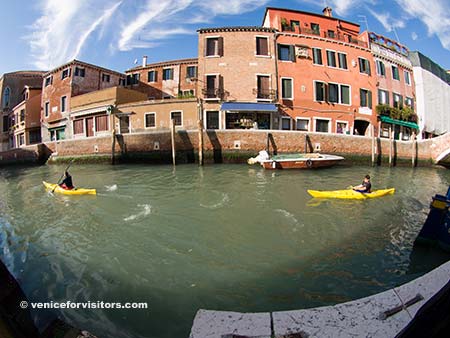
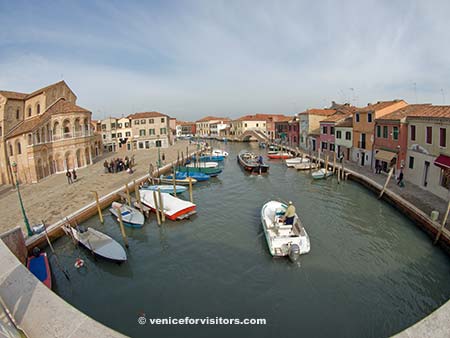
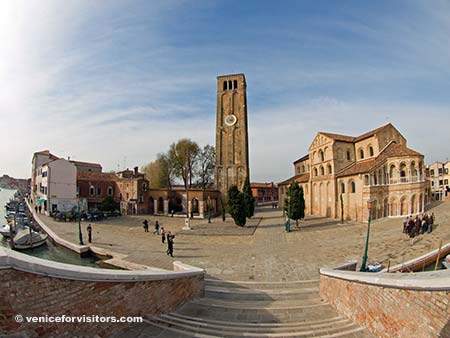
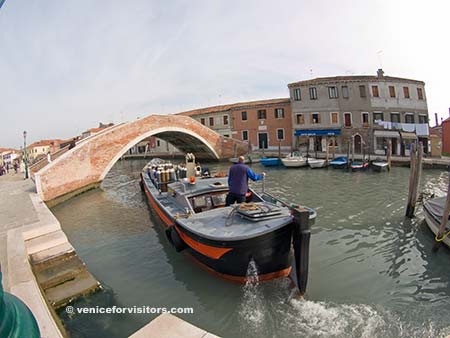

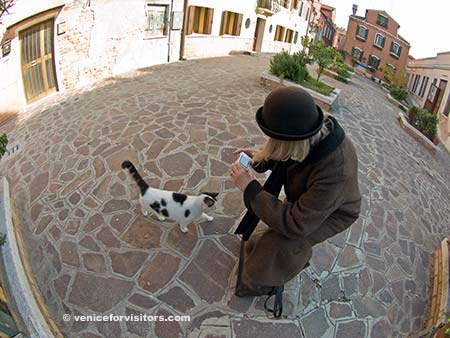
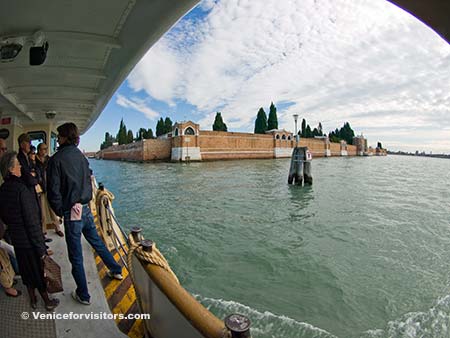

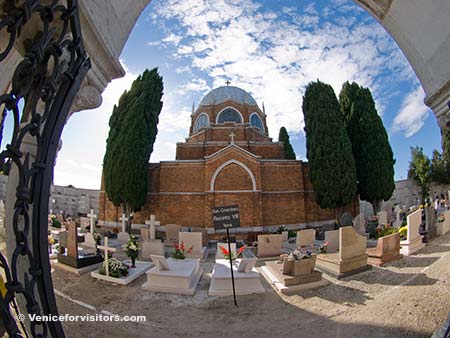
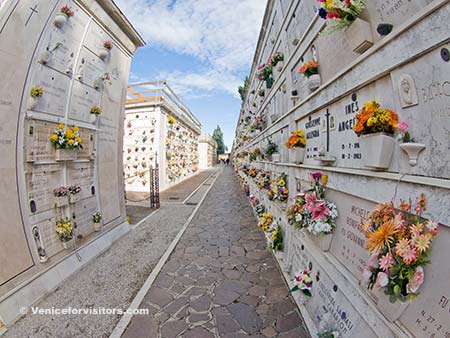
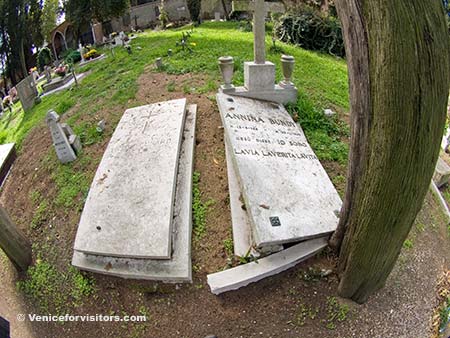
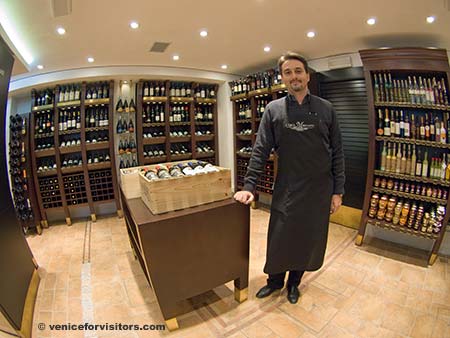
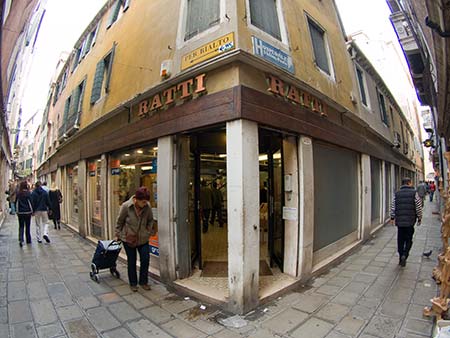
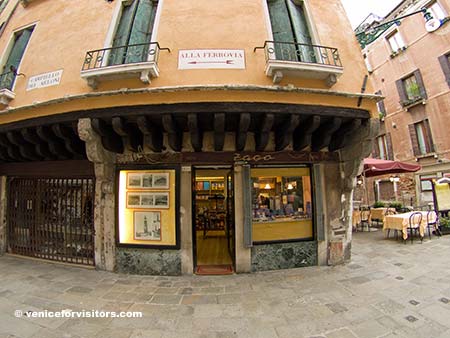
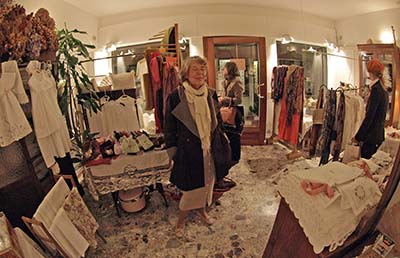
 Annelie
Pizzi e Recami is a gorgeous shop on the Calle Lunga San
Barnaba, just off the Campo S. Barnaba in the direction of the Zattere.
Annelie
Pizzi e Recami is a gorgeous shop on the Calle Lunga San
Barnaba, just off the Campo S. Barnaba in the direction of the Zattere.  The
shop is lovely, the owner is both knowledgeable and charming, and the prices are
extremely reasonable for the quality of the merchandise. What's more, most of
the products are locally made--in some cases, from imported materials. The
little girls' cotton dresses, for example, are pieced together from embroidered
Chinese tea towels, resulting in dresses that look far more expensive than they
are.
The
shop is lovely, the owner is both knowledgeable and charming, and the prices are
extremely reasonable for the quality of the merchandise. What's more, most of
the products are locally made--in some cases, from imported materials. The
little girls' cotton dresses, for example, are pieced together from embroidered
Chinese tea towels, resulting in dresses that look far more expensive than they
are.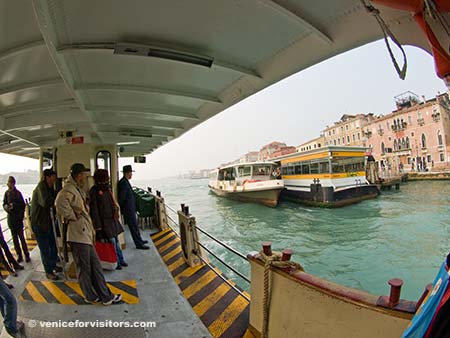
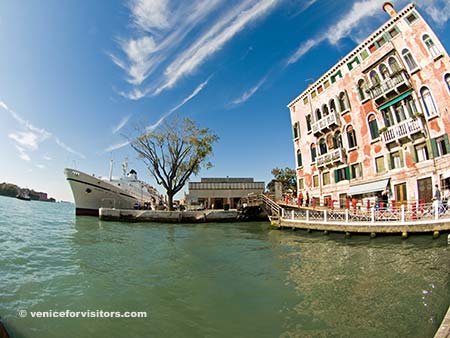
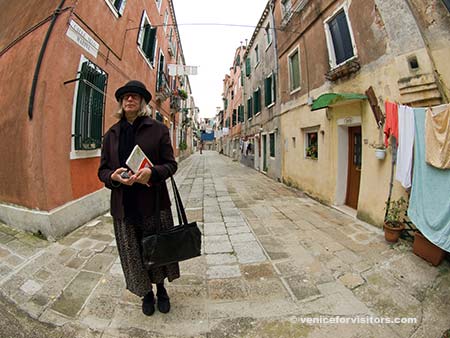
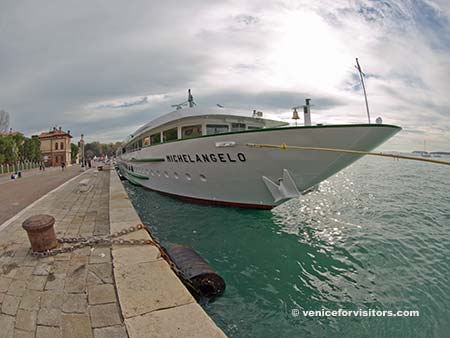
 The
location offers the best view in Venice if your cabin faces the water: From your
cabin window, you can see vaporetti pulling into the Giardini waterbus
stop, and occasionally a cruise ship or Adriatic ferry will go by.
The
location offers the best view in Venice if your cabin faces the water: From your
cabin window, you can see vaporetti pulling into the Giardini waterbus
stop, and occasionally a cruise ship or Adriatic ferry will go by. 

